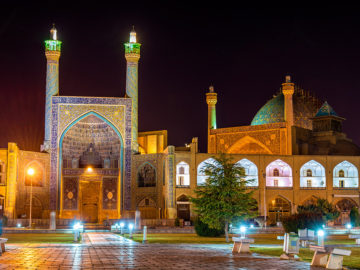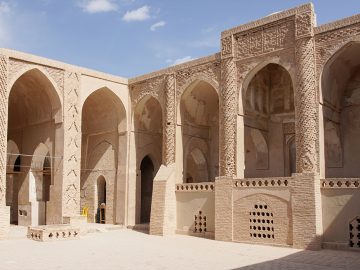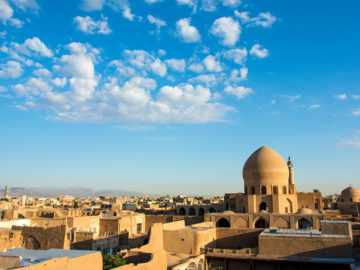Isfahan, located in the center of Iran, neighbors the provinces of Semnan, Qom, Markazi, Lorestan, Chaharmahal and Bakhtiari, Kohgiluyeh and Boyer-Ahmad, Fars, Yazd, and South Khorasan. With an area of about 107,018 square kilometers and 24 districts such as Khur and Biabank, Nain, and Ardestan as the largest ones, Isfahan province is the sixth-largest province of the country. About 6.5% of Iran’s population including minorities such as Armenians, Jews, and Georgians live in Isfahan, where the dominant language is Farsi.

The history of the province dates back to the Elamite Empire (2700- 539 B.C.). According to the archaeological excavations in the mound of Sialk, Kashan city in Isfahan province was populated even before the Birth of Zoroaster (1500 B.C.). After the collapse of the Sassanid dynasty in 651 A.D., the Muslim Arabs invaded Isfahan, and years later, Mardavij, the founder of the Al-Ziyar (Ziyarid) dynasty (930-1090), seized and ruled over it. Isfahan was the capital of Al-Ziyar dynasty for a while until the Buyid dynasty (934-1062) took the throne. During the Seljuk Empire (1037-1194), Isfahan was mostly the capital of Iran but it fell into the hands of Mongols after their invasion to Iran in 1219. Isfahan flourished mostly during the Safavid period (1501-1736) and more especially during the reign of Shah Abbas I when the city was selected as the capital.
Isfahan province has many natural and historical attractions, especially from the Safavid period, attracting annually a large number of domestic and inbound tourists. The cities of Isfahan, Kashan, and Abyaneh are the most visited tourist destinations in the province.
Of its historical attractions registered as the UNESCO World Heritage sites include Naqsh-e Jahan square, Atiq Jame’ Mosque, Chehel Sotoun Garden, and Fin Garden. Besides, the Zayanderud River and its historical bridges are other attractions.
Golabgiri festival (extracting rose water) in Qamsar and Neasar and the carpet washing ritual in Mashhad Ardehal in Kashan are among the known cultural and religious attractions in the province.
Isfahan province has also long been considered one of the major centers of Iran’s fine artworks and handicrafts such that they are still produced there.
In December 2015, Isfahan was registered as the Creative City in UNESCO for its craft and folk art.
Carpet weaving, copper engraving, vitreous enamels, Khatam (similar to marquetry), tiling, turquoise dishes, printing on fabric (Kalamkari), Wood carving, and Silver making are the most prominent fine works in this province. The most famous eatable souvenirs of Isfahan are Gaz (a type of nougat) and Poolaki (a type of candy) made with various materials and in different shapes. Rosewater (Golab) of Qamsar and other herbal extracts are also among other souvenirs.
The most famous traditional cuisine of Isfahan is called Beryan that is a type of barbecued meat. Yogurt stew, Halim Shir (made with oat, wheat and milk cereal), Halim Bademjan (made with eggplant), Keledos, Ghaymeh Rizeh (meatballs), and Ash Shul Qalamkar (Hodge-Podge soup) are other native foods. The most prominent figures of this province include Sheikh Baha’i, Kamal al-Molk, Reza Abbasi, Jalil Shahnaz, and Sohrab Sepehri.



